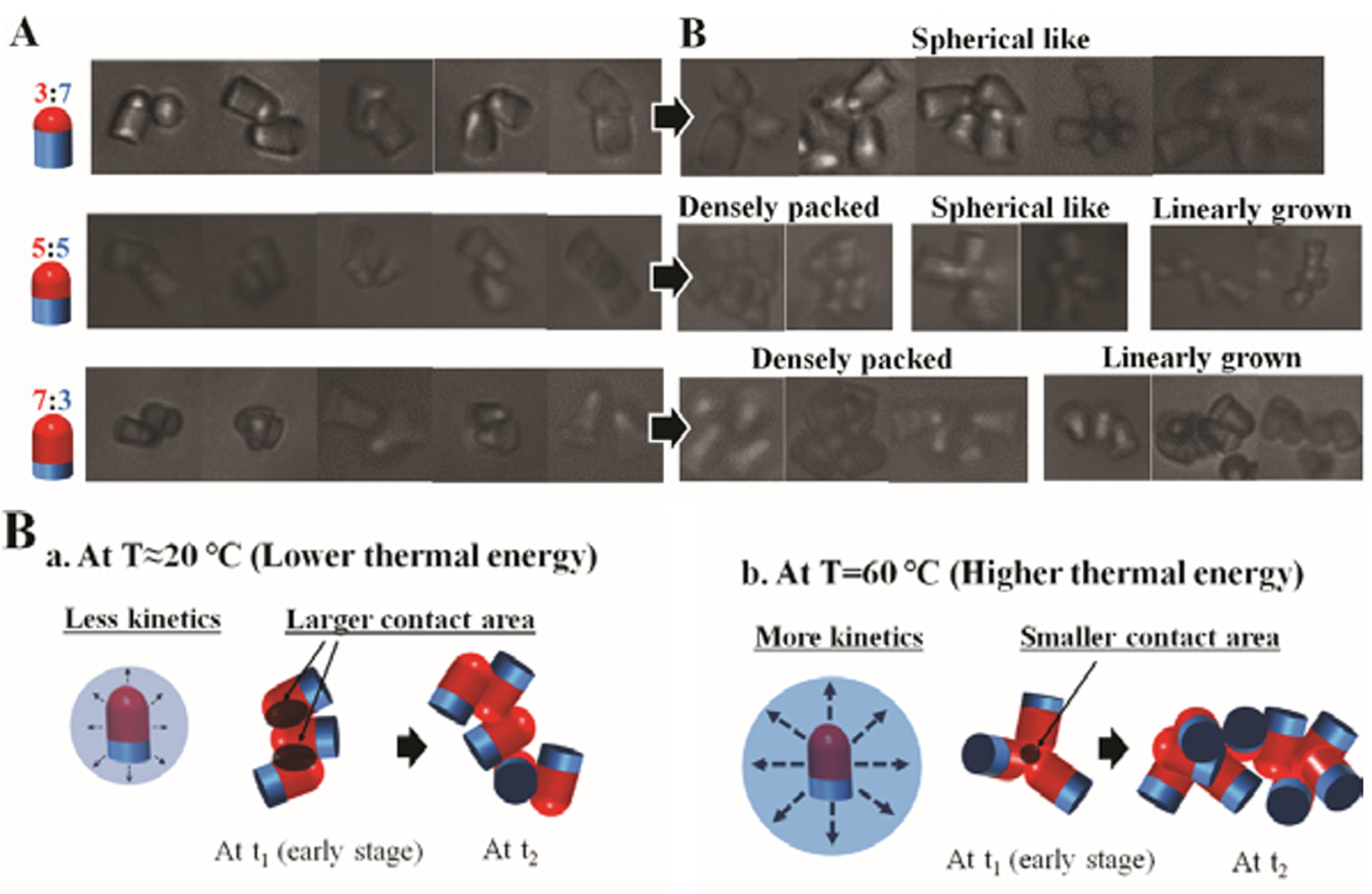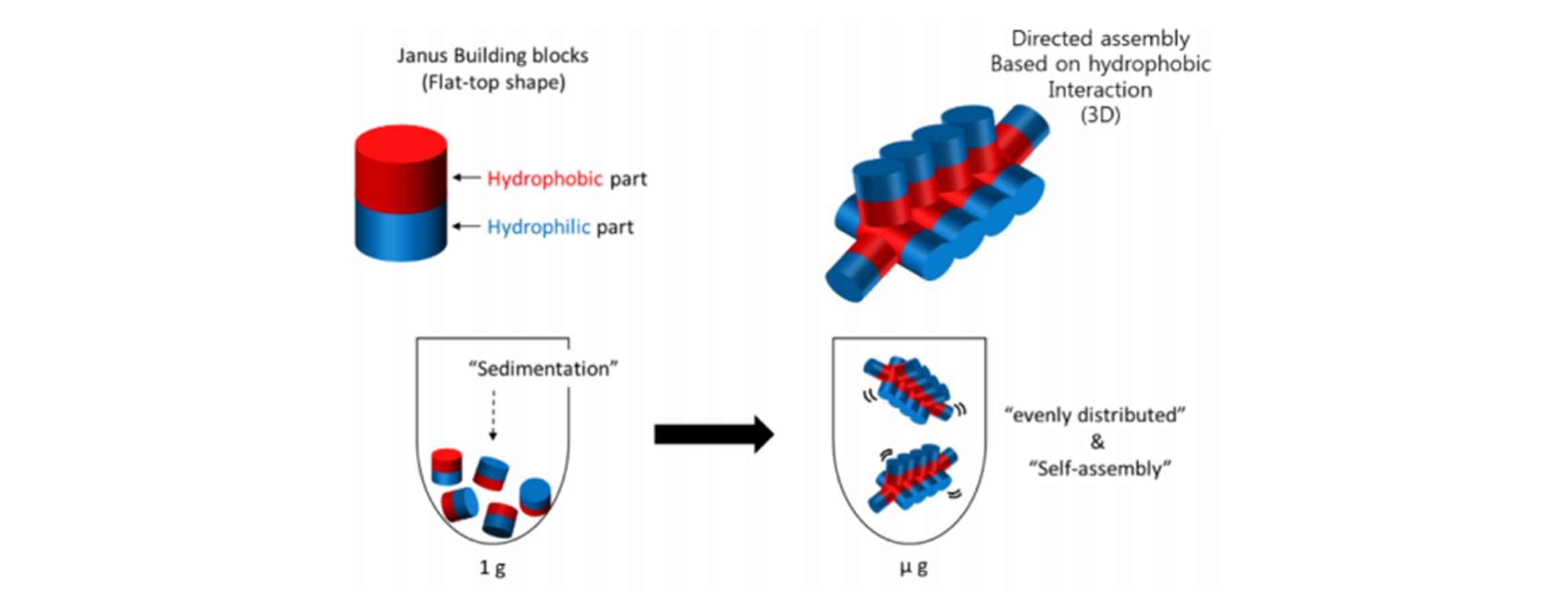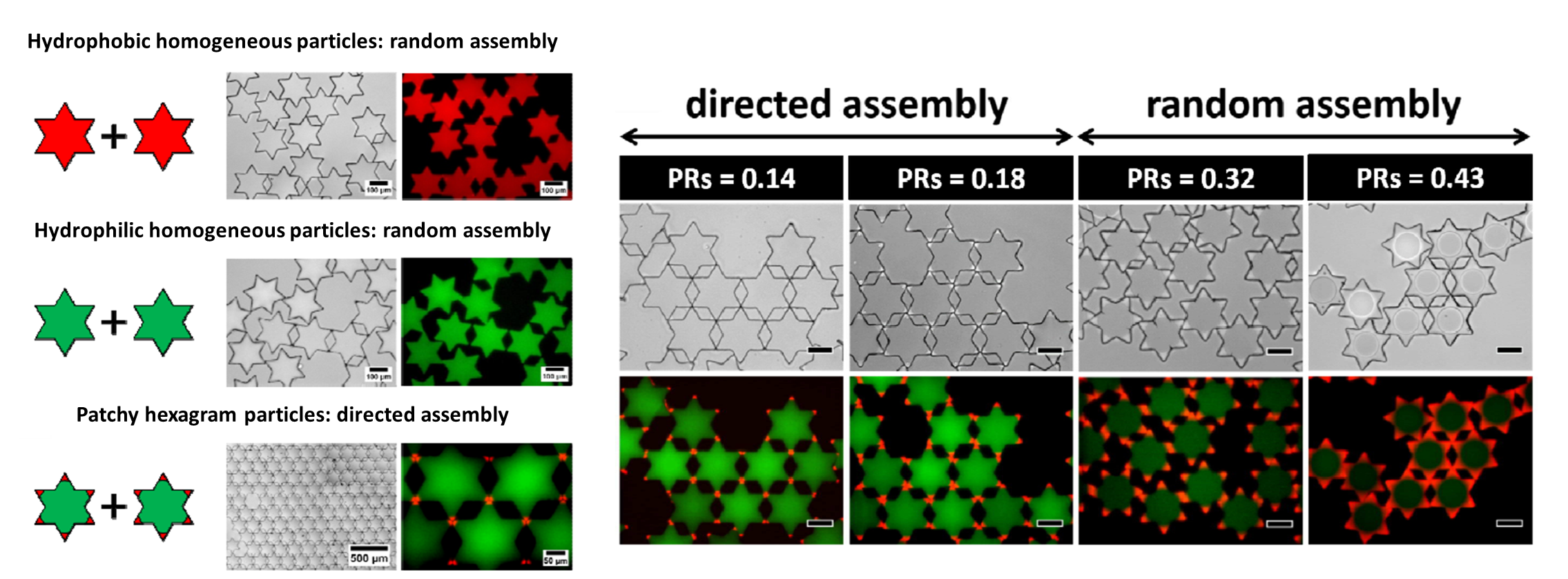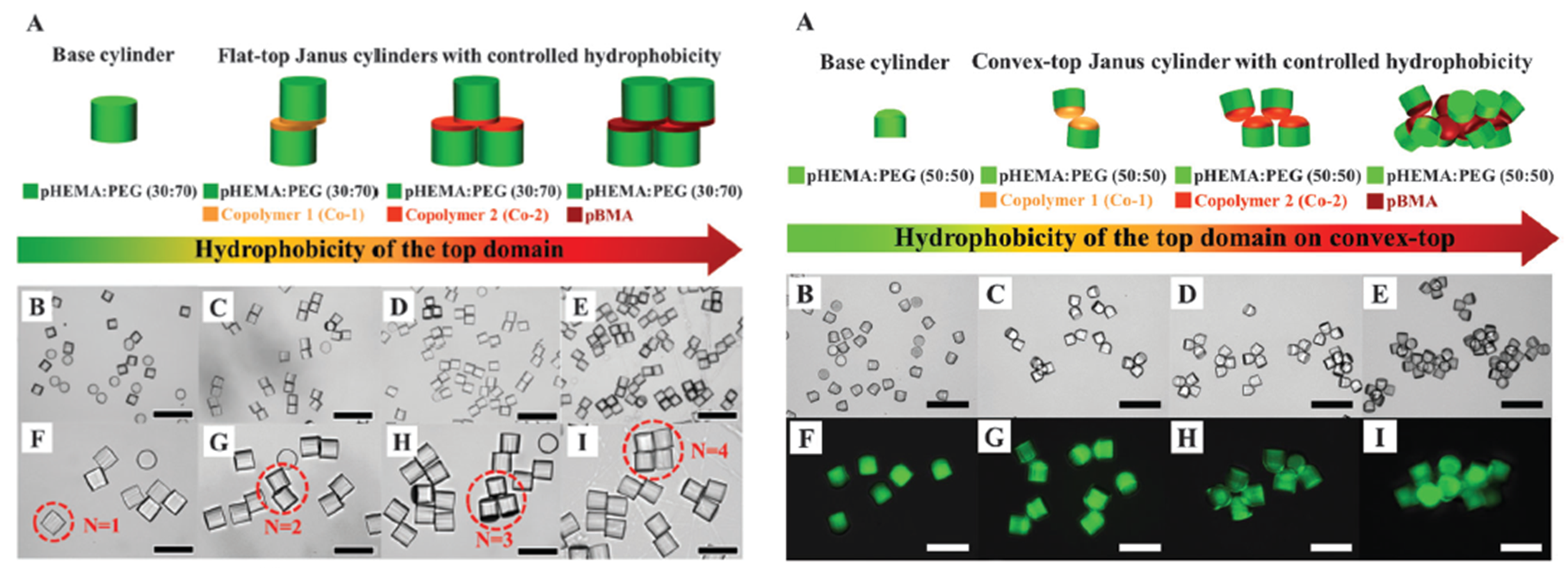Microgravity research: Self-assembly of Functional Materials
- Home
- Research
- Research
- Microgravity research: Self-assembly of Functional Materials
Formation of 3D Self-Assembled Clusters of Anisotropic Janus Particles in Microgravity (2024)

- This study, in collaboration with NASA’s Glenn Research Center (GRC), employs the Light Microscopy Module (LMM) aboard the International Space Station (ISS) to observe the self-assembly phenomena of anisotropic particles under microgravity conditions. Our investigation shows that anisotropic Janus particles with their distinctive properties can spontaneously organize into ordered structures under microgravity. This directional interaction among anisotropic particles is expected to enable control over assembly processes, forming three-dimensional (3D) clustered structures that are unattainable on Earth. Thus, this study not only advances our understanding of particle self-assembly in microgravity but also opens new avenues for synthesizing materials with novel functionalities through the unique assembly of anisotropic colloids. [Link]
- 이 연구는 NASA의 Glenn Research Center(GRC)와 협력하여 국제 우주 정거장(ISS)에 있는 광학 현미경 모듈(LMM)을 사용하여 미세 중력 조건에서 이방성 입자의 자가 조립 현상을 관찰합니다. 독특한 특성을 가진 이방성 야누스 입자는 미세 중력 조건에서 자발적으로 질서 있는 구조로 조직될 수 있음을 확인하였습니다. 이방성 입자 간의 이러한 방향적 상호 작용은 조립 프로세스를 제어하여 지구에서는 얻을 수 없는 3차원(3D) 클러스터 구조를 형성할 수 있을 것으로 예상됩니다. 따라서 이 연구는 미소 중력 조건에서의 입자 자가 조립에 대한 이해를 높일 뿐만 아니라 이방성 콜로이드의 독특한 조립을 통해 새로운 기능을 가진 재료를 합성할 수 있는 새로운 길을 열어줍니다.
Self-assembly in Microgravity

- We studied tiny suspended particles which have been designed by scientists to connect themselves in a specific way to form organized structures within water. The Janus particles being studied have one half of their surface composed of hydrophilic groups (which interact with water) and the other half of hydrophobic groups (which are repelled from water). The microgravity environment on the International Space Station (ISS) provides researchers insight into the fundamental physics of microparticle self-assembly and the kinds of colloidal structures that are possible to fabricate. This, in turn, helps manufacturers on Earth in choosing which high-value material is worth investigating. [Link]
- 우리는 과학자들이 물속에서 조직화된 구조를 형성하기 위해 특정한 방식으로 연결되도록 설계된 작은 부유 입자를 연구하고 있습니다. 연구 중인 야누스 입자는 표면의 절반이 친수성 부분 (물과 인력)으로 구성되고 나머지 절반은 소수성 부분 (물과 반발력)으로 구성됩니다. 국제 우주 정거장 (ISS)의 미세 중력 환경은 미세 입자 자가 조립에 대한 기초 물리학 및 제작 가능한 콜로이드 구조의 종류에 대한 연구원의 통찰력을 제공할 것입니다. 이 연구는 지구상의 제조업체들이 조사할 가치가 있는 고부가 가치의 재료를 선택하는 데 도움을 줄 것입니다.
Directed assembly of Janus microparticles by solvent polarity (2017)

- We demonstrates the possibility of controlling the directed self-assembly of microsized Janus cylinders by changing the solvent polarity of the assembly media. We find that a binary solvent system with precisely controlled polarity induces directional assembly of the microsized Janus cylinders. Thus, the formation of two-dimensional (2D) and three-dimensional (3D) assembled clusters can be reliably tuned by controlling the numbers of constituent Janus cylinders in a binary solvent system. [Link]
- 이 연구에서는 용매의 극성에 따른 미세 이방성 입자의 자가 조립 정도의 차이를 통하여 자가 조립의 직접적인 제어에 대해 연구를 수행하였습니다. 극성 용매의 비율을 정밀하게 제어하는 방법을 통하여 이방성 입자의 조립을 유도할 수 있음을 확인하였으며, 이를 사용하여 2D 및 3D 클러스터의 형성을 제어할 수 있음을 입증하였습니다.
Capillary-induced directed assembly of patchy hexagram particles (2016)

- We demonstrate that controlling the shape and patchiness of particles trapped at the air-water interface can represent a powerful approach for forming ordered macroscopic complex structures through capillary interactions. We designed hexagram particles using a micromolding method that allowed for precise control over the shape and, more importantly, the chemical patchiness of the particles. The assembly behaviors of these hexagram particles at the air–water interface were strongly affected by chemical patchiness. [Link]
- 우리는 공기-물 계면에 갇힌 입자의 모양과 패치 성을 제어하는 것은 모세관 상호 작용을 통해 정렬된 거시적 복잡한 구조를 형성하기 위한 강력한 접근법을 나타낼 수 있다는 연구를 수행하였습니다. 마이크로 몰딩 방법을 사용하여 헥사 그램 입자를 디자인하여 입자의 모양과 화학 패치를 보다 정확하게 제어할 수 있습니다. 공기-물 계면에서의 이들 헥사 그램 입자의 조립 거동은 화학적 패치에 의해 크게 영향을 받습니다.
Hydrophobic microparticle assembly of Janus microparticles (2015)

- We use Janus cylinders as building blocks to form 2D or 3D clusters via hydrophobic interactions in methanol. We investigate how cylinder geometry or degree of hydrophobic interaction affects the resulting cluster geometries. The convex-top Janus cylinders lead to 3D clustering through tip-to-tip interactions, and the flat-top Janus cylinders lead to 2D clustering through face-to-face attraction. The number of Janus cylinders in 3D clusters is tuned by controlling the degree of hydrophobic (or hydrophilic) interaction. [Link]
- 이 연구에서는 이방성 원기둥 형태의 입자를 사용하여 메탄올 환경에서 소수성 상호 작용을 통해 2D 및 3D 클러스터를 형성하고, 입자의 형태 및 소수성 상호 작용의 정도가 클러스터 형성에 미치는 영향에 대해 연구를 수행하였습니다. 둥근 형태의 입자 상단을 갖는 이방성 입자는 첨단 간의 상호 작용에 의하여 3D 클러스터를 형성하며 평평한 입자 상단을 갖는 이방성 입자는 상단면 간의 상호 작용에 의하여 2D 클러스터를 형성합니다. 3D 클러스터의 입자 수는 소수성 상호 작용 정도를 제어하여 조절할 수 있음을 입증하였습니다.








